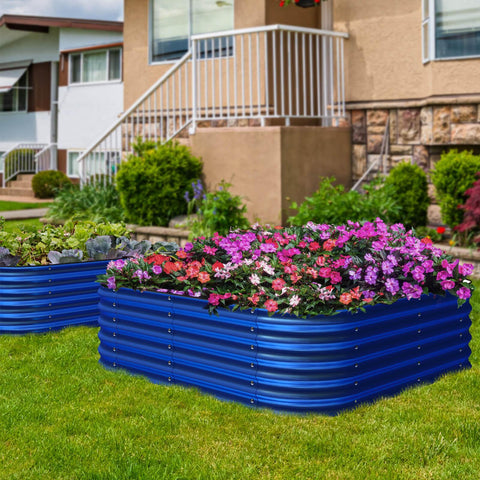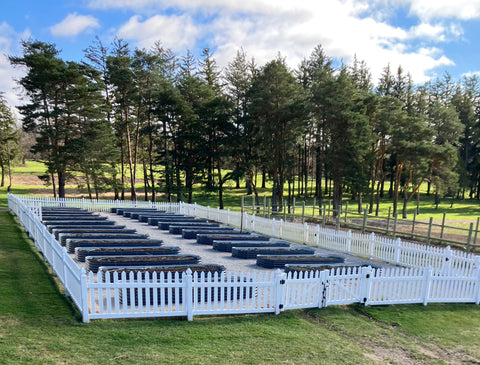Tips from Olle garden beds:Garden Gates with Trellis and Raised Beds: A Step-by-Step Guide
When it comes to enhancing the beauty and functionality of your garden, the possibilities are endless. One creative and versatile idea that's gaining popularity is the combination of garden gates with trellis and raised beds. This unique fusion not only adds aesthetic charm but also offers a range of practical benefits for both novice and seasoned gardeners. In this article, we'll explore the wonderful world of garden gates, trellis, and raised beds, and highlight the numerous advantages they bring to your outdoor space.
- Aesthetic Appeal
First and foremost, garden gates with trellis and raised beds instantly elevate the aesthetics of your garden. The trellis adds vertical interest and serves as an attractive backdrop for climbing plants like roses, ivy, or jasmine. This creates a lush, vibrant display of colors and textures that is truly enchanting.
- Space Optimization
In smaller gardens, space is often at a premium. Raised beds help maximize your growing area by providing extra planting space while keeping everything neat and organized. The trellis adds a vertical dimension to your garden, effectively using all available space and allowing you to grow more plants in a confined area.

- Easy Accessibilit
Garden gates, when integrated with raised beds, make tending to your plants a breeze. You can access your garden without trampling on delicate plants, reducing the risk of damage. This makes planting, weeding, and harvesting more convenient, especially for those with mobility issues.
- Improved Drainage
Raised beds are designed to have excellent drainage, preventing waterlogged soil and root rot. This means your plants are less likely to suffer from overwatering, and you have more control over the moisture levels in the soil, which is crucial for the health of your garden.
- Extended Growing Season
The raised beds in this setup offer better soil temperature regulation. They warm up faster in the spring, which can extend your growing season. This allows you to plant earlier and enjoy fresh produce for a more extended period.
- Pest Control
Elevating your plants in raised beds can help deter some garden pests. Many crawling insects, such as slugs and snails, have a harder time reaching your precious crops when they're raised off the ground. Additionally, you can install protective netting on the trellis to keep out birds and other animals.
- Creative Planting Opportunities
Garden gates with trellis and raised beds provide a canvas for your creativity. You can play around with different plant pairings, hues, and textures. Climbing plants on the trellis can act as natural shades for shade-loving plants beneath. This fusion allows you to craft a garden that's uniquely yours.
- Defined Garden Spaces
A garden gate with trellis and raised beds can help define separate areas within your garden. The ability to divide your garden into various themes or parts, such as a vegetable garden, a flower garden, or a herb garden, is very helpful for those who prefer cultivating a variety of plants.

- Enhanced Curb Appeal
These garden features are not limited to the backyard. Placing a garden gate with trellis and raised beds in your front yard can significantly boost your home's curb appeal. It offers a warm and inviting welcome to visitors, creating a memorable first impression.
- Increased Property Value
Lastly, this garden fusion can increase the overall value of your property. A well-maintained, attractive garden with unique features like trellis and raised beds can be a selling point when it's time to put your house on the market.
A beautiful garden is often defined not only by its vibrant flowers and lush greenery but also by its architectural elements. Garden gates are a wonderful addition that can enhance the aesthetic appeal of your outdoor space while providing practical benefits such as privacy and security. In this article, we'll explore how to create garden gates using trellis and raised beds, combining both functionality and beauty in your garden.
Materials You'll Need
Trellis Panels: These will serve as the main structure of your gate. Choose trellis panels that are sturdy and made from weather-resistant materials like cedar or pressure-treated wood.
Raised Bed Frames: Opt for raised bed kits or build custom frames from wood to create the structure of your gate. The dimensions will depend on the size of the opening you're covering.
Gate Hinges: Select durable gate hinges that can support the weight of your gate. Consider heavy-duty strap hinges for added strength.

Gate Latch: Choose a latch that complements the design of your gate and provides secure closure.
Screws and Nails: Ensure you have the appropriate hardware for securing the trellis and raised bed frames together.
Tools: You'll need tools like a saw, drill, screwdriver, and measuring tape for the construction process.
Step-by-Step Guide:
- Plan Your Design:
Before you start building, it's essential to plan your garden gate's design. Consider the dimensions of the gate, the style of trellis, and the type of climbing plants you want to grow on it. Sketch out your ideas to visualize the final result.
- Assemble the Raised Bed Frames:
Begin by building the raised bed frames that will serve as the gate's structure. Measure and cut the wood to the desired dimensions and assemble the frames using screws or nails. Make sure the frames are square and sturdy.
- Attach the Trellis Panels:
Secure the trellis panels to the raised bed frames using screws. Place the trellis on one side of the frame, leaving an equal overhang on both sides to create the gate's wings. Ensure that the trellis is level and properly aligned with the frame.
- Reinforce the Gate:
To strengthen your gate, add diagonal braces on the backside. These braces provide extra stability and prevent the gate from sagging over time.
- Install Gate Hinges:
Attach gate hinges to one side of the gate frame, ensuring they are level and properly aligned with the raised bed. Then, mount the other side of the hinges onto a secure post or structure in your garden.
- Add a Gate Latch:
Install a gate latch on the opposite side of the hinges. This will allow you to easily open and close the gate securely.
- Finishing Touches:
To enhance the gate's appearance, consider painting or staining it to match your garden's aesthetics. You can also add decorative elements, such as finials or trim, to give your gate a personalized touch.
- Plant Climbing Vines:
Now that your garden gate is complete, it's time to plant climbing vines or flowers at the base of the gate. As these plants grow, they will beautifully cover the trellis and add a natural, picturesque element to your garden.
Creating garden gates using trellis and raised beds is a rewarding DIY project that combines functionality with aesthetic appeal. With careful planning and the right materials, you can craft a charming and practical entryway for your garden. Not only will it provide security and privacy, but it will also become a focal point in your outdoor space, inviting both admiration and envy from your neighbors and visitors. Enjoy the process of building your gate, and watch your garden flourish with the addition of climbing plants that will truly make your garden gate come alive.
